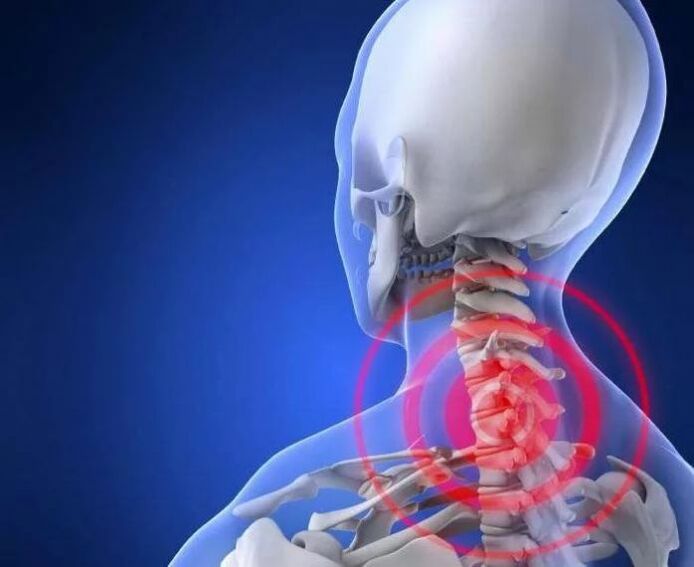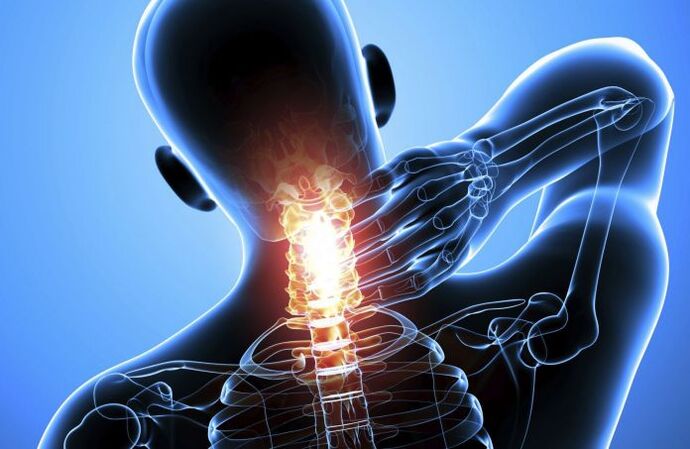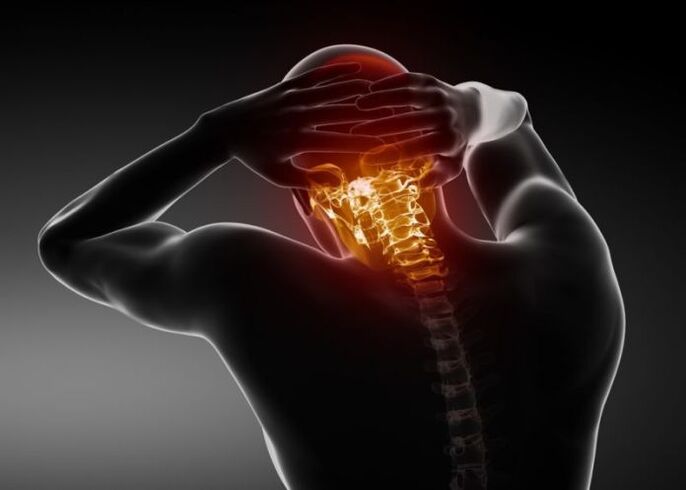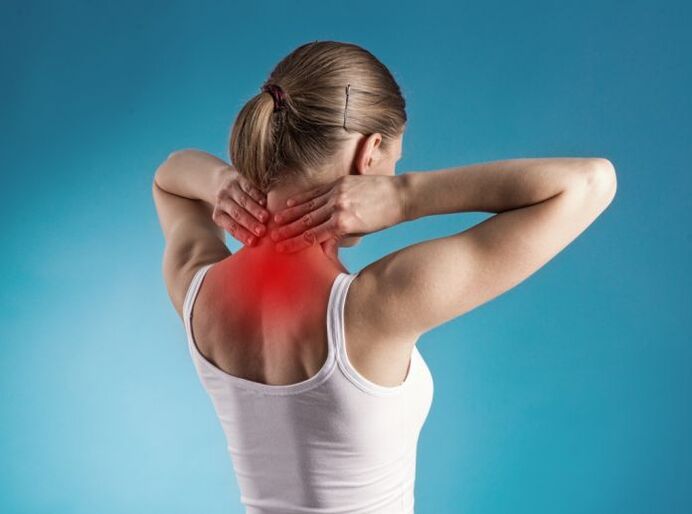The leading position in the list of the most common diseases of the 21st century invariably remain with diseases of the spine.The first line, in most cases, belongs to the diagnosis: osteochondrosis of the cervical region - the disease dangerous and requiring compulsory intervention by experienced doctors.
The disease does not spare anyone, neither women, nor men (clinical cases of cervical osteochondrosis in men are recorded less often than in women, but there are a place to be).In addition, the disease is “young” every year, today the signs of cervical osteochondrosis can be observed not only for those who crossed the age threshold at 40 years old, but also for those who have just celebrated their 25th anniversary yesterday.
What is osteochondrosis of the cervical spine, which serves as a catalyst for the start of the development of this disease, why an epidemic called cervical osteochondrosis is gaining momentum, what symptoms of cervical osteochondrosis should become a reason for a visit to a medical institution, how not to get into the risk group and is there a chance to get rid of cervical osteochondrosis?For those who are looking for answers to these questions, this article is intended.So, about everything in order.

General information about the disease
You can characterize this ailment in one word - dystrophy.It arises against the background of changes in the chemical composition of bone and cartilage and entails the loss of the elements of the spinal column (discs) of elasticity and strength.Their structure changes, initially the outer layer (fibrous ring) is destroyed, then the inner (jacket nucleus).The disk (fibrous cartilage) that has completely lost its properties can be deformed, grow with growths (osteophytes), and shift.
The discs, changing their shape, dimensions and location, pinches either nerve roots (they can injure one of the 8 pairs of spinal nerves located in this zone), or blood channels (arteries responsible for nutrition of the brain take place).In the first and second case, the symptoms of osteochondrosis of the cervical spine clearly make themselves felt.
Osteochondrosis of the cervical is the most common diagnosis, which has to be voiced by a neuropathologist or a vertebrologist to his patients.Osteochondrosis of the cervical vertebra, as the most common cause of a visit to a doctor, is a consequence of two reasons:
- Anatomical features.The vulnerability of the upper section of the ridge is associated with the miniature and fragility of its connecting elements (vertebrae, disks).
- Serious loads.The neck is responsible for both mobility and stability at the same time.This cannot but provoke a quick “wear” of weak links.
That is why the question: whether cervical osteochondrosis is treated, excites many.
The causes of the disease
Before going to the point: how to cure cervical osteochondrosis, it is worth understanding the causes of its occurrence, and try to exclude factors that can provoke the beginning of its development.

It is not possible to bring a full list of catalysts, but to indicate the moments that can lead to the fact that the signs of osteochondrosis of the cervical spine will not be long in coming is quite real.
The main causes of osteochondrosis:
- improper nutrition (running on the run, fast foods, the lack of a regime and a full -fledged balanced food in the diet is a direct path to the depletion of cartilage and bone tissue that lacks its health and vitamins that support its health);
- a sedentary lifestyle (another possible option is a lack of physical activity, it provokes the stagnation of the elements of the ridge and the absence of a full -fledged oxygen nutrition of tissues);
- a genetic predisposition (in this case, ask what to do with cervical osteochondrosis, you can tell your parents, they will tell you how to get rid of osteochondrosis of the cervical region and how this ailment is manifested);
- injuries (the need to obtain information about what cervical osteochondrosis is also when the development of this disease has become a consequence of the displacement or rupture of the intervertebral discs as a result of the injury);
- Diseases of the vascular system, infectious or inflammatory nature (in the first case, information on the topic: how to treat osteochondrosis of the cervical spine occurs due to the fault of the nutrient deficiency that support the cartilage tissue, in the second, through the fault of autoimmune and necrotic processes of destroying joints, vertebrae and discs).
The instability of the hormonal background caused by excess excess weight or stressful situations, as well as incorrect posture (scoliosis) are two more reasons for familiarizing themselves with the materials in the case: is it possible to cure osteochondrosis of the cervical region.
Signs signaling the disease
The causes of cervical osteochondrosis are established.Work on errors carried out.Now the most important thing is not to miss the symptoms of osteochondrosis of the neck (in the event that the risk factors were eliminated too late and the ailment has already begun to manifest itself).The sooner they are diagnosed, the easier and faster the road to recovery will be.
For convenience, all signs of the disease are conveniently divided into two groups.This can be done on the basis of the main criterion: origin.
The first group is phenomena, the appearance of which is triggered by the pollination of blood arteries (caused by vascular changes).Compressed channels of blood transportation, saturated with oxygen and nutrients, cannot fully cope with their task, brain parts do not receive nutrition, and lose part of their functionality.

The second group is symptoms, the manifestation of which is associated with a pinching of the nerve endings (caused by neurological changes).In most cases, the vagus nerve (coordinating state of the esophagus, pharynx and larynx), the diaphragm nerve (responsible for the heart rhythm and regulation of the respiratory process), as well as nervous endings that innervating other organs of the internal structure, suffer from deformation, destruction and mixing of disks and vertebrae.
More detailed information on how, with osteochondrosis of the cervical spine, do not miss the first “calls” of the disease and use the help that the attending physician can offer in a timely manner are presented in the table below.
Symptoms of the disease
| Origin | Manifestations |
|---|---|
| Changes in the state of the vascular system | dizziness, fainting Violation of coordination Memory deterioration reducing the level of concentration Loss of visual acuity and hearing Black dots in front of the eyes ringing, ears Apathy, depression Panic attacks Nausea, vomiting |
| Neurological changes | Pain in the zone of the neck, temples, nape (permanent, paroxysmal) Pains giving to the hand, shoulder, inters -bearing region, chest cage sampling, difficulty breathing, suffocation squeezing, heaviness in the chest, angina pectoris lump in the throat, difficulty swallowing, dryness, itching in the throat |
Important!When at least one sign appears from the above table, it is urgent to undergo an examination and begin treatment of osteochondrosis of the cervical spine.Other behavior can lead to more serious consequences, which are not possible to cure without surgical surgery!
Complex therapy
How to treat cervical osteochondrosis, this is how a painful question sounds.The answer to it is unequivocal: with the help of complex therapy, prescribed by a competent qualified doctor.
The fight against this ailment requires discipline from the patient and a clear following the recommendations of the specialist.In most cases, it is possible to cure osteochondrosis of the cervical spine with the help of several techniques of traditional and alternative medicine (to determine a specific program aimed at effective treatment of cervical osteochondrosis, only a doctor that coordinates the patient).
As a rule, he selects techniques from the next list:
Exercise therapy

Physical physical education is an excellent tool for healing therapy, which allows, how to cure osteochondrosis of the cervical region and improve the general health of health.She solves several problems at once:
- normalizes blood circulation;
- accelerates metabolic processes;
- relieves pain syndrome;
- strengthens the muscle corset;
- unloads the spine;
- It charges with vigor and optimism.
There are a number of rules that explain how to get rid of cervical osteochondrosis by charging correctly without worsening the situation.They say:
- The set of exercises should be selected by a specialist who has an idea of the general clinical picture (age, chronic diseases and patient characteristics);
- Any discomfort during class should be a reason for refusing gymnastics (at least until a doctor’s consultation), as well as a period of exacerbation of the disease;
- Too active sharp movements are completely excluded, you need to do carefully without haste;
- Charging should be carried out regularly (physical education will not solve problems from time to time).
Massage (manual therapy)
Is it possible to cure cervical osteochondrosis in another way?Quite.All that is needed in order to activate the regeneration properties of the body, relieve cramps, release nerve roots, pinched arteries and reduce symptoms are skillful hands of an excellent masseur or manual.
General recommendations are as follows:
- The procedure should be carried out by a specialist with appropriate education and experience;
- the time of exposure to the problem area is no more than 35 minutes;
- the duration of one course (without a break) is not more than 12 sessions;
- Any changes in the patient's condition should be known to his attending physician.
Important!Massage or visit the therapist’s office - Manual with contraindications with osteochondrosis is strictly prohibited!
Physiotherapy

This area of clinical medicine has found its own answer to the question: how to get rid of osteochondrosis?She proposes to use the healing properties of various phenomena, including:
- high -frequency sound waves (ultrasound);
- mechanical vibrations (vibration);
- electric currents of various intensities (electrophoresis, UHF);
- ultraviolet radiation (quartz);
- Other techniques of physiotherapy.
These procedures contribute to the onset of positive dynamics.They normalize blood flow, relieve inflammation, stop pain, facilitate the process of administering drugs and reduce the terms necessary for their absorption by tissues.
Drug treatment
How to deal with cervical osteochondrosis, which continues to progress, despite all the attempts made to stop this process?Only with the help of drugs designed to eliminate the causes of this phenomenon.
All drugs used in a complex approach are divided into several groups depending on the effect.The table below will help clarify the situation.
Medicines
| Group | Action | |
|---|---|---|
| Analgesics, NSAID | removal of a pain symptom, Elimination of the inflammatory process |
|
| Musorelaxants |
Removing muscle spasm | |
| Chondroprotectors | activation of the regeneration function of fabrics, restoration of the structure of the discs, vertebrae, joints |
|
| Vitamins and minerals |
stimulation of metabolic processes, activation of the protective properties of the body, Improving microcirculation, Strengthening immunity, |
The specialist decides how to treat osteochondrosis of the neck.It can supplement therapy with drugs related to the vasodilator group (to relieve blood vessels), antidepressants (to relieve nervous tension) and others depending on the general clinical picture of the disease.
Summing up, you can give a definite answer to the main question: is osteochondrosis treated?Yes, but only under the strict control of a competent doctor and with the great desire of the patient!

























